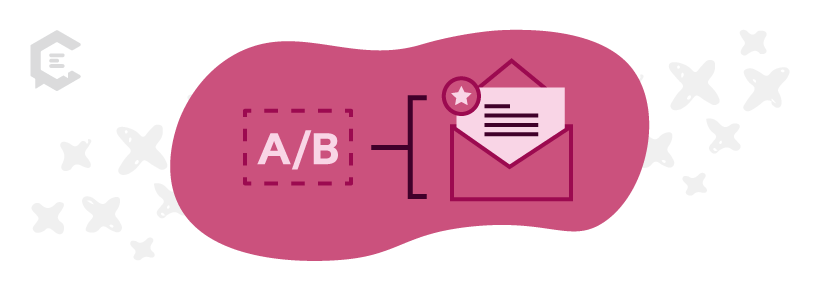You’ve crafted a sharp email letting your customer know about something they are likely to be excited about. You’ve sent it, but you didn’t get the results you anticipated? Your open rate could be to blame, and while it’s just one of many factors in email marketing campaign success, it may be the most foundational.
Why are open rates important?
Quite simply, an unopened email is an unread email, and an unread email is one that’s not selling your goods or services. The first step in getting any email subscribe to take action, whether it’s to learn more about a product or even buy it, is to get them to hear your message. Open rates matter because they represent the number of messages that are getting out there. There’s no sense in creating an email newsletter that no one is going to read.
What’s the average open rate for email marketing?
There’s no single rate that’s appropriate for all companies or organizations to shoot for. The average open and click-through rates for email marketing depend largely on the industry. Mailchimp finds that the average open rate for all industry types is 21.33%. Some industries, such as daily deals (15.06%) and vitamins (15.03%), have overall lower open rates than industries like government (28.77%).
How to improve the open rates of your emails
Want a higher open rate? You don’t need to be a marketing guru to make it happen. Start with the following email marketing best practices:
1. Use a double opt-in
A common cause of a low open rate is a disengaged subscriber list. This can happen when someone signs up for a promotion or single event but isn’t really interested in staying on for the long haul. A double opt-in strategy requires your subscribers to sign up, then click on a confirmation email to start receiving your emails.
Could you possibly lose some subscribers between the two opt-in parts? Absolutely. But those most likely to engage with your emails will complete both steps, giving you a more active subscriber base.
2. Clean your list
How long has it been since you culled your list of bounced email addresses and those that haven’t opened a message in a long, long time? If you haven’t done it in a while, make it a priority. Getting rid of this dead weight will give you two immediate benefits:
- Those less likely to open your emails will no longer get them, boosting your open rate almost immediately
- You won’t be paying for those who never open emails, saving you money for email service plans based on subscriber counts
Many email marketing platforms have an automated way to get rid of inactive subscribers. Others will let you move them to a different “inactive” bucket until you know for sure you want to keep them. You may decide to send a final “we noticed you haven’t opened any emails lately” message, encouraging them to click on a link to confirm their continued interest. If you don’t get a response, you can rest easy knowing you won’t be getting rid of loyal email fans.
3. Use short subject lines
Have you gone through your email inbox lately? Which emails captured your attention? It likely wasn’t the email that had a rambling subject line that got cut off in your preview window on your desktop or phone. The problem with long subject lines is that tend to be less powerful and engaging for the reader and they also tend to get caught of. So make sure that your subject line is no more than 9 words and 60 characters.
4. Avoid spam words
Email service providers like Gmail or Yahoo! have their own lists of terms they consider spammy, and they change all the time. Spam words include things like ‘cash’, ‘income’, ‘free gift’, ‘lowest price’, and ‘please read’. Check out this list of 188 spam words to avoid.
5. Stick to plain text when possible
There is no shortage of beautiful templates out there to wow email subscribers and show off your brand. When it comes to getting emails read, however, plain text offers a significant advantage. For one, plain text emails are more likely to show up in any browser or mobile device’s email app. They also seem more personal and are easier to read.
If you struggle to get your emails seen, limit the images and color blocks to the bare minimum space of your email. Spend more time on your copy, using proper spacing and eye-catching calls to action to help readers scan for important information without getting lost in the design.
Pick a strategy and A/B test it
If your email marketing open rate is abysmally low, trying any one of these strategies can help you meet your goals. Of course, the more you can employ, the better your chances of boosting your average open rate and getting extra eyes on your next promotion, product launch, or email newsletter.
You’ll want to start with just one strategy and then A/B test it. For example, if you want to try shorter email subject lines, start with two of your favorites and send subject #1 out to half of your customers and subject #2 out to the other half.
Do not change any other detail of your email. In fact, try to send them at the same time, to an equal mix of demographics, if possible. Make sure both halves of your list represent your list well so that the only differentiating factor between the test emails is the actual subject line.
After seeing the results, you’ll be better informed on what worked (or what didn’t.) Do this again and again, just with the email subject line for a time. When you feel that you have enough data from that strategy, move on to email design or choice of text blocking. Avoid testing two strategies at the same time, or you won’t know what worked!
Need a professional copywriter to help improve your email open rates? Reach out to ClearVoice, we’ve got hundreds of talented copywriters ready to help. Get started today.






